There’s a good chance you’ve heard of South Africa’s Kruger National Park – and if you haven’t, you should; it’s bigger than almost 50 countries. It also has some of the world’s largest crocodiles, and is home to around 140 different animals, including more than 25,000 elephants. It’s a very popular place for safaris and has hundreds of gorgeous safari lodges. But it’s not the only park worth visiting in South Africa.
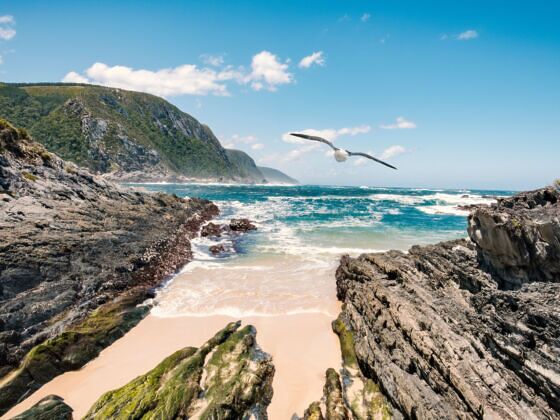

A Guide to the 5 Best South African National Parks
Road trip in South Africa for several weeks (or months!) and you’re unlikely to visit every national park in the country – that’s how many there are. And trust me, I’ve tried.
From the world-renowned Kruger National Park to the lesser-known gems of Addo Elephant National Park and Garden Route National Park, these are five of the best and biggest South African national parks, including what to expect at each one, what animals they’re known for, and why I love visiting each one (and you will, too).
-
- Kruger National Park
- Addo Elephant National Park
- Table Mountain National Park
- Kgalagadi Transfrontier National Park
- Garden Route National Park
Kruger National Park
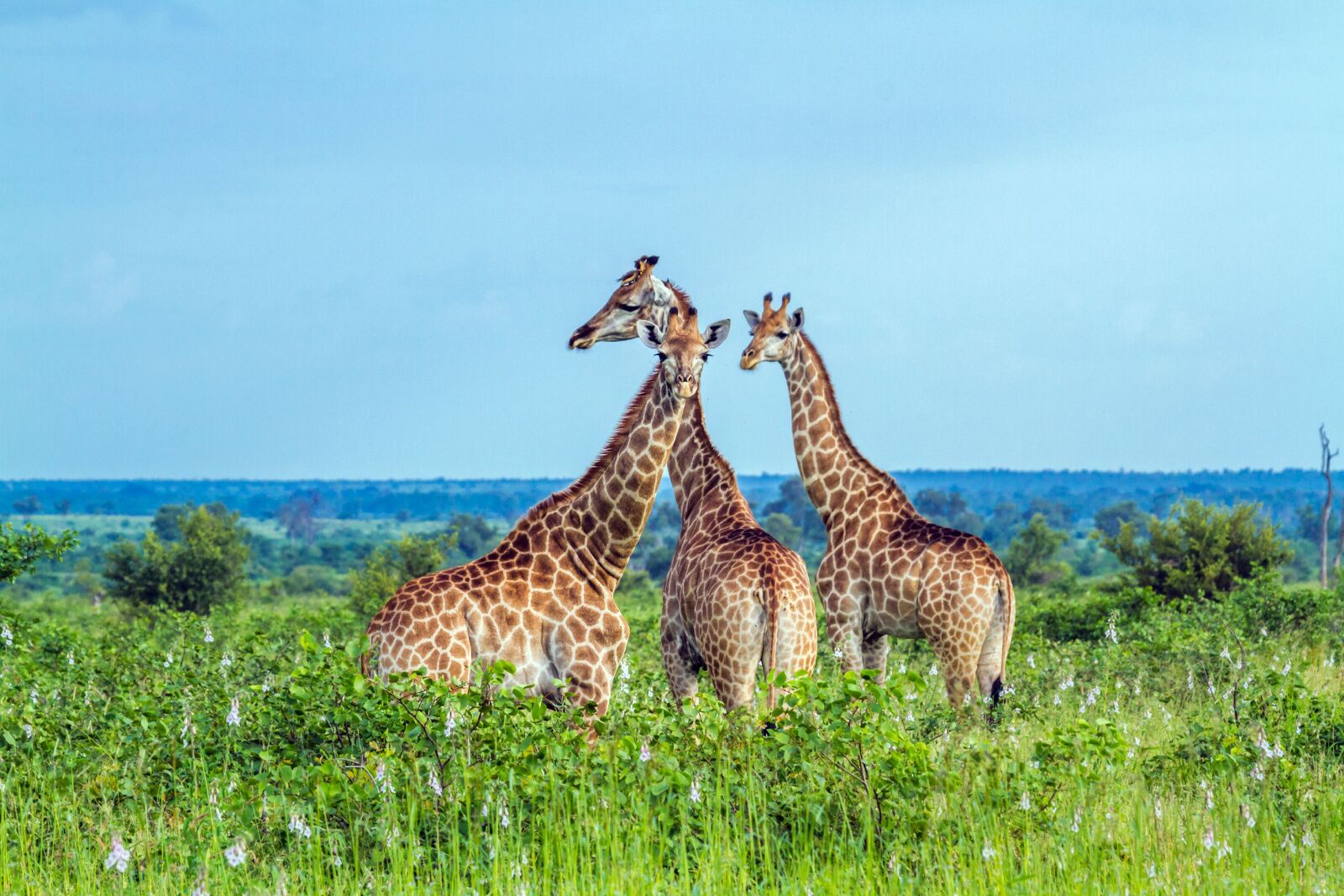
Photo: PACO COMO/Shutterstock
Kruger National Park is the most popular park in South Africa, and probably on the continent on the whole. It’s an easy addition to a longer trip around Johannesburg, and you can find safari packages that visit in just two or three days from the major city.
Claim to fame: If you’re planning a safari in South Africa, chances are you’re visiting somewhere in or near Kruger National Park. No matter what animal or bird is on your checklist, you’ve got excellent chances of spotting it here. Of the South African national parks, Kruger offers the most options for hotels, camps, tours, and more.
What to do there: When it comes to viewing wildlife, Kruger offers many options. Self-drive in your car, join an experienced guide on an open-air vehicle with radio contact to guarantee sightings, enjoy private game drives at luxury lodges, sleep al fresco in an outdoor bed under the stars, go on a night safari to spot the elusive leopard, take a safari hike in the bush with a naturalist, or even play golf alongside hippos and zebras. The options are as close to endless as possible.
Good to know: Skukuza International Airport is inside the park, making it easy to start safari drives as soon as you arrive. The area closest to the airport is the most fruitful in terms of sightings, particularly of big predators, such as leopards and lions. Travel north, and your sightings may not be as frequent – but there’ll also be fewer tourists.
Personal highlight: The last few times I’ve visited Kruger, I’ve traveled the park from south to north. I love watching the vegetation and landscapes change, keeping my eyes trained on every rock or branch for a sign of movement. Seeing the giant baobab trees and green fever tree forests up north is always a highlight, as are any sightings of Kruger’s magnificent big tuskers – elephants, to you non-safari folks.
My best sighting: Of the popular South African national parks, Kruger really does have the best chances of amazing animal sightings across the board. In the northern reaches of the park, there’s a campsite called Punda Maria that sits on a fence at the edge of park near a watering hole. One time, while cooking breakfast over a gas stove, I watched in awe as a procession of buffalo passed me. They numbered in the hundreds, kicking up a cloud of dust in their wake, with little ones running to catch up to their moms, and some grumpy old males rounding up the rear.
When to go: In the dry season (May – September) the bush is thinner, making it easier to see animals as they congregate around watering holes. The days also aren’t as sweltering hot as in the summer, and biting insects present less of a problem.
Where to stay: The accommodation options are endless. You can stay at a luxurious lodge in a private game reserve bordering the park, many of which share open borders with Kruger and include safaris as part of the nightly rate.
There are also more budget options where you can stay in a locally owned homestay or mid-range lodge, or stay at one of the many fenced campsites inside the park. Then there’s everything in between, from self-catering chalets to affordable lodges skirting the borders of the park, and unique stays in old trains or airplanes. You can book camping and lodging within the park on Kruger’s website.
Entry fees: Whether you drive in for the day or stay overnight, you’ll need to pay a daily conservation fee of r460 per adult (about $26). Often, these conservation fees are included in the price of your tour or accommodation, so be sure to check when booking.
Addo Elephant National Park
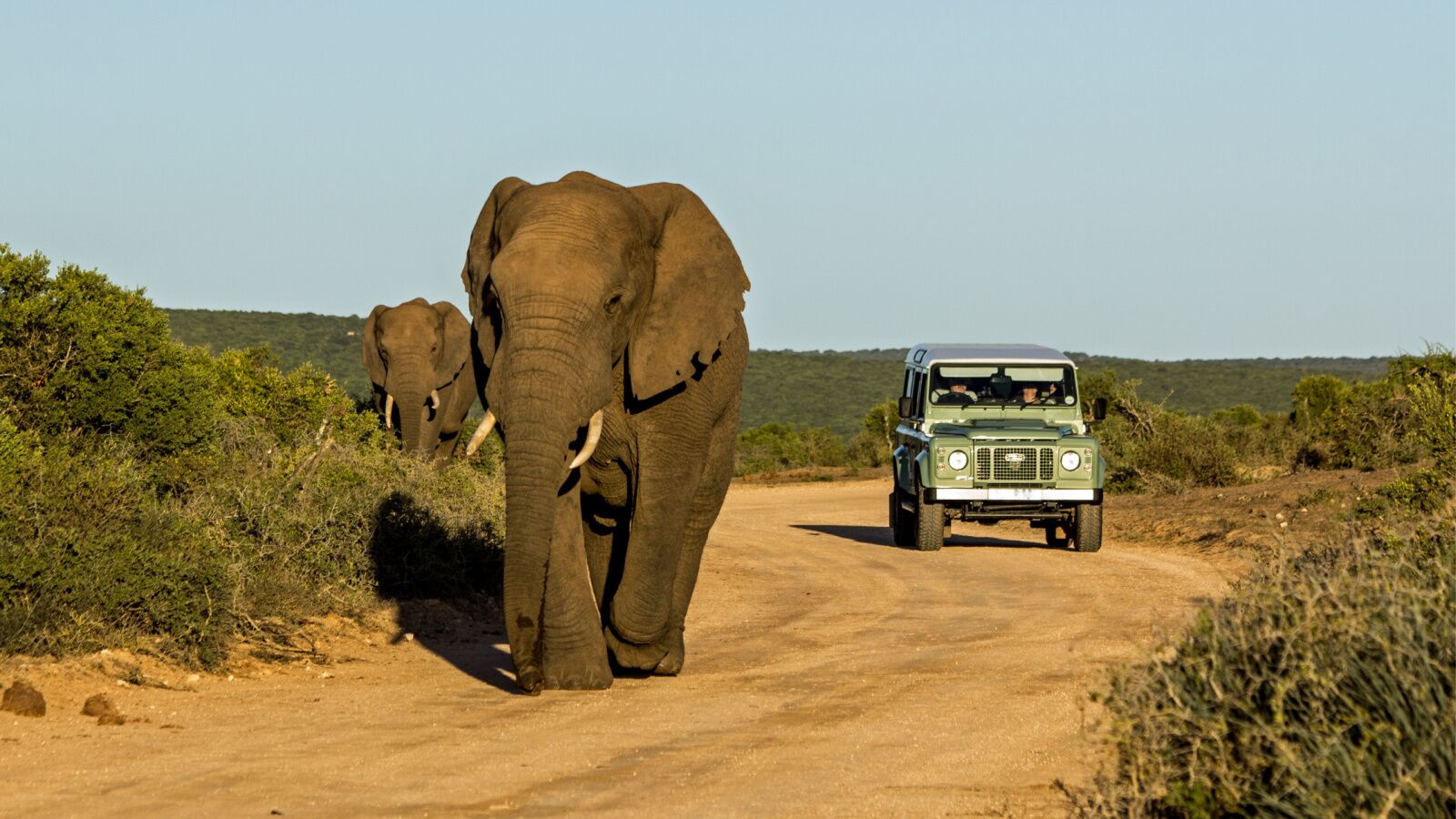
Photo: Carcharadon/Shutterstock
You won’t be surprised by what you find here. The park was established way back in 1931 when the area had only 11 elephants remaining. Needless to say, conservation efforts have been successful.
Claim to fame: The fourth-largest of the South African national park is considerably smaller than Kruger. But if elephants are at the top of your list, then Addo Elephant National Park is where you’ll want to be.
What to do there: This park is best combined with a road trip along South Africa’s beautiful Garden Route region. In the park, self-driving is recommended as the main road through the park is well-signed and easy to navigate. You can also book guided group drives and night drives, though horseback riding, driving ATVs, and catch-and-release fishing are also possible.
Good to know: The park boasts the big seven – two more than the famous “African big five” found at Kruger. Those two extra species are whales and sharks, which are possible to spot on the same day as elephants, rhinos, buffalo, leopards, and lions. However, you’re less likely to see the on-land big five in Addo as compared to Kruger. And you’ll need to book a boat trip if you want to view any ocean species, of course.
Personal highlight: One of my most memorable highlights in this South African national park was taking a horseback ride through the Nyati section of Addo. It was an absolute thrill to meander past buffalos and zebras on horseback, watching as they gave us curious looks, wondering who this new animal was that had entered their space.
My best sighting: One time when I visited Addo, I noticed that larger herds of elephants were congregating between 2 and 3 PM every afternoon at a particular watering hole. This became known to us as “elephant happy hour,” and it’s where we parked every afternoon, watching the parade of elephant families.
When to go: Malaria-free, Addo Elephant National Park is great to visit year-round, and visiting in summer means you get to appreciate the magnificent beaches in the area as well. That said, the water-scarce winter months of May to September are the best for game viewing, as the bush is less dense and animals are easier to spot.
Where to stay: There are a range of accommodation options in the area, including luxury chalets in the forested area of the park, tented suites alongside a watering hole, and self-catering chalets and camping. You’ll find a smattering of luxury lodges both inside the park, and along the fringes of it. You can book most everything online.
Entry fees: The daily conservation fee at this park is r376 for adults, and r188 for kids (about $21 and $11, respectively).
Table Mountain National Park
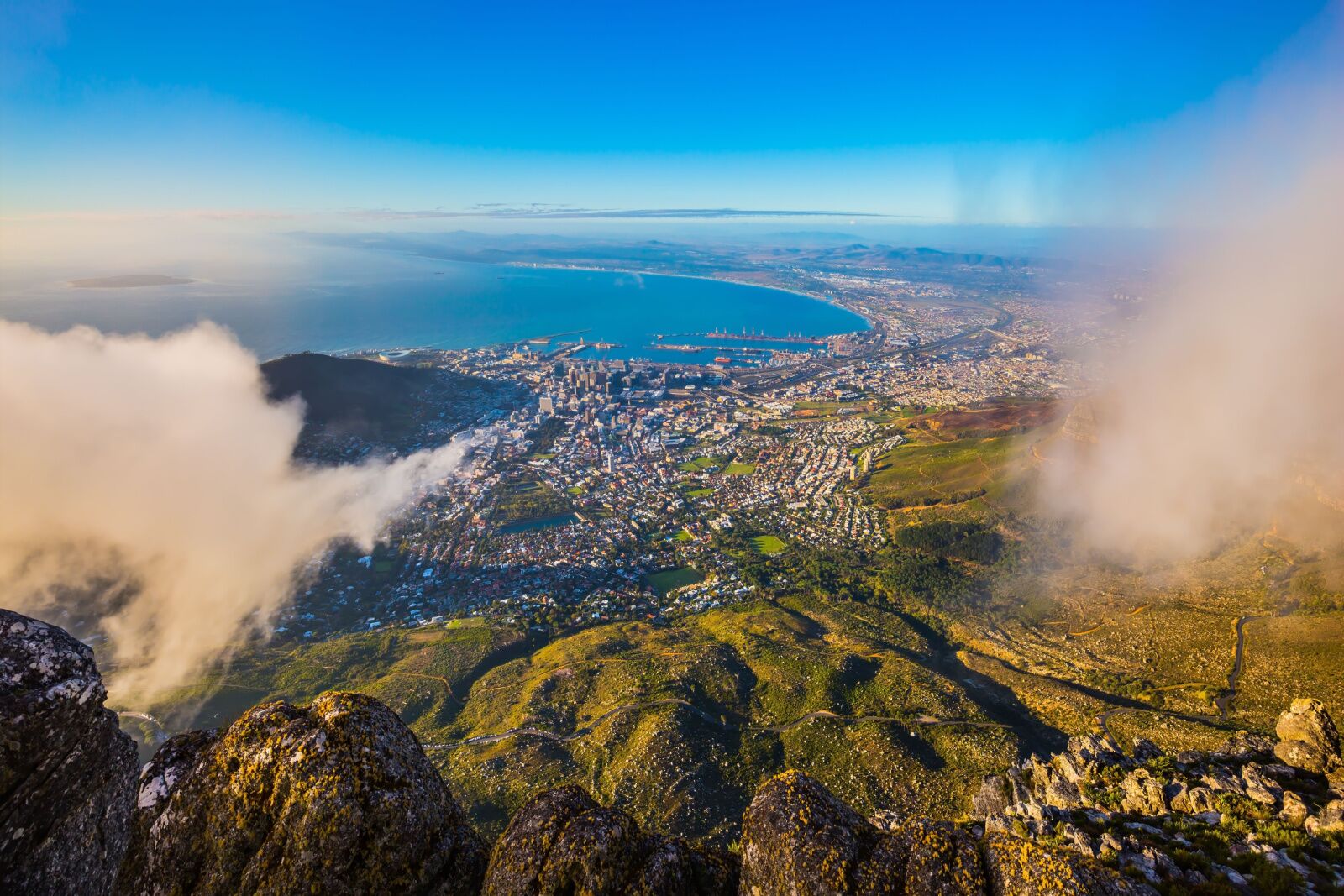
Photo: Kavram/Shutterstock
You’ve probably seen photos of Table Mountain — it’s the imposing summit in Cape Town. It’s also a national park, albeit without the wildlife of Kruger.
Claim to fame: Although technically not one of the biggest South African national parks, this list wouldn’t be complete without mentioning the park home to Cape Town’s iconic Table Mountain.
What to do there: While removed from the wildlife that dominates many other South African national parks, Table Mountain is still a nature-lover’s paradise. Lace up your hiking boots and tackle one of the many trails, ranging from leisurely strolls to challenging treks. And the even more adventurous can go rock climbing, abseiling, or paragliding with one of many tour operators in the Cape Town area.
Good to know: Table Mountain National Park doesn’t have set entry and exit gates, unlike at many other South African national parks. Instead, it’s divided into different sections, each with their own rules and regulations.
Personal highlight: For me, the best ways to explore this park is to hike Table Mountain, then take the cable car for the return trip. From Kirstenbosch Gardens, it’s a 4.4-mile hike one way, and gains more than 4,000 feet of elevation gain. The challenging hike can take several hours and provides glorious panoramic views of the city spread out below. I love taking time for a picnic and lunch on the top of the mountain before opting for a leisurely trip back down with the help of the cable car.
Personal highlight: While I haven’t been lucky enough to spot the mountain’s elusive caracal cat, amazing sightings of brightly colored sunbirds and beautiful sugarbirds resting on pink flowers abound. I also always make time to watch the rock hyraxes (chunky, rabbit-sized rodents) as they comically hop around the top of the mountain. And the penguins at Boulders Beach are adorable as they dance in the sand adorned in little black and white tuxedos.
When to go: It’s possible to visit Cape Town any time of the year, though November through February bring the best weather in terms of blue skies and sunshine-filled days. Visit in the shoulder-season months of September, October, March, or April and you can still be treated to temperate days without the crowds.
Where to stay: Options are limited, confined to a few small tented camps and cottages, usually booked quite far in advance. That said, the options for accommodations in Cape Town are endless, ranging from five-star beachfront hotels and trendy guesthouses to homestay rental options, voluntourism establishments, hostels, and anything else you can think of.
Entry fees: Some parts of the park are free to visitors, while others are payable. At Boulders Beach, you can expect to pay r176 (about $10) per adult, while entry to the Cape of Good Hope costs r376 (about $21). Tickets for the Cable Car vary based on time of day and your age, but the most you’ll currently pay is r395 (about $22) for a round-trip ticket (or about $12 for a one-way).
Kgalagadi Transfrontier Park
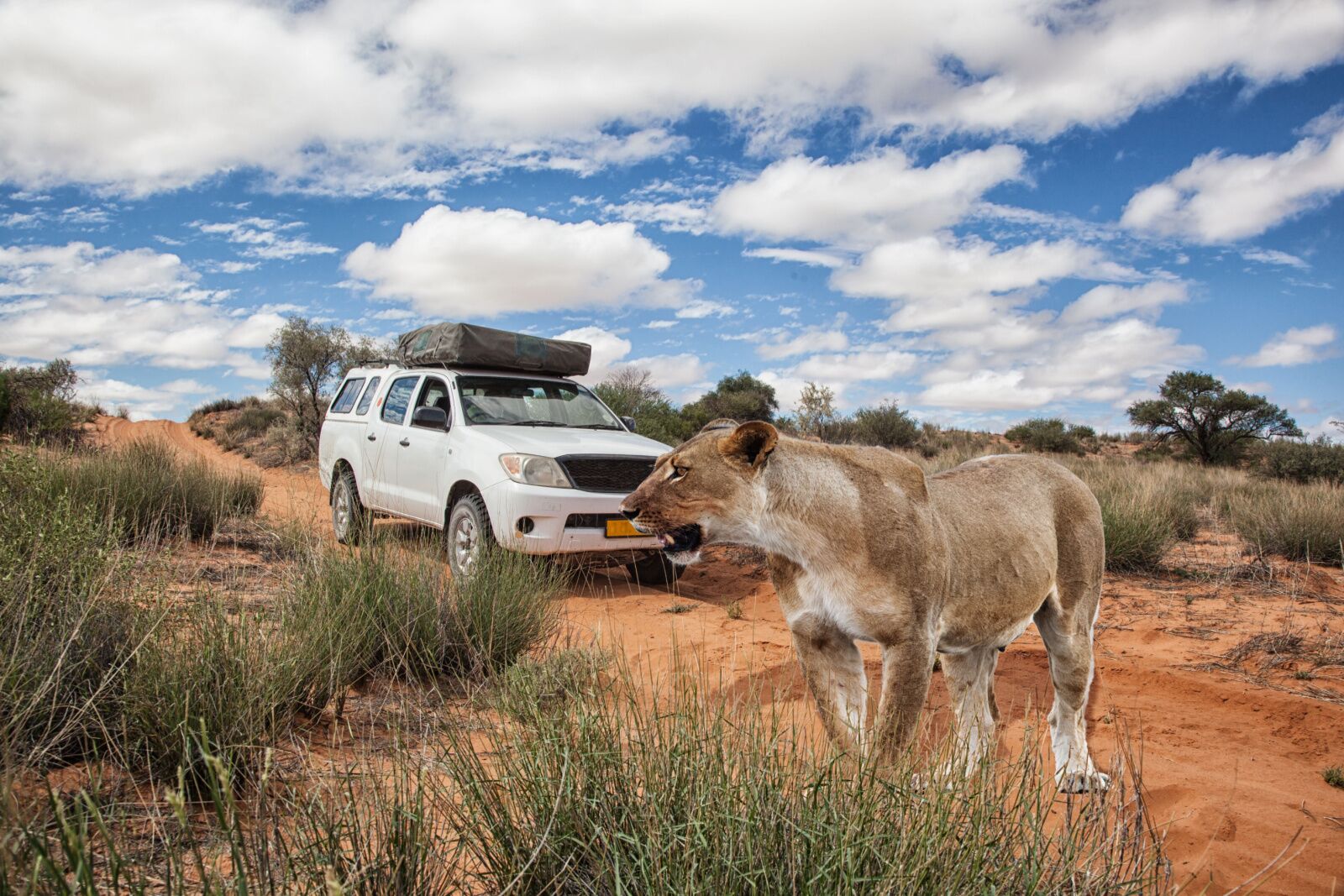
Photo: Michael Wick/Shutterstock
In the middle of southern Africa is the captivating Kgalagadi Transfrontier Park. It stretches across South Africa and Botswana and this encapsulates the essence of untouched natural beauty. Kruger may be the most popular of the South African national parks for average safari-goers, but Kgalagadi Transfrontier Park is one of the best if you’re looking for a true adventure.
Claim to fame: Spanning into Botswana, Kgalagadi Transfrontier Park is the second-largest of the South African national parks and a desert oasis for wildlife. This park is a testament to the resilience and adaptability of wildlife in extreme environments.
What to do there: Think of this as a more arid alternative to Kruger. Activities are similar, ranging from game drives to bush walks to birdwatching and photography classes. It’s often a stop on longer, multi-country safari trips through Africa that also include Botswana and nearby Namibia.
Good to know: The Kgalagadi is an adventure for intrepid travelers. Anyone with a daring spirit prepared to venture off the beaten track will be rewarded with unique desert landscapes that are home to wandering lone gemsbok, journeys of giraffes, and amazing encounters with majestic lions, graceful cheetahs, and elusive leopards. But it’s not just the big cats that steal the show; you’ll also encounter fascinating desert-adapted species like quirky meerkats and charming bat-eared foxes. Just be sure to go in a decent off-road vehicle with a couple of spare tires. It’s not nearly as developed as other South African national parks.
Personal highlight: For me, the Kgalagadi is a place to get away from it all, appreciate the space and the solitude, and disconnect – there’s no cell phone signal in most of the park. Instead, your connection should be with fellow travelers while sharing tales of your daily sightings around the campfire.
My best sighting: One of my most thrilling encounters with lions occurred in the Kgalagadi. We were wandering through camp at night en route to a floodlit watering hole, when suddenly, a lion roared just next to me, causing me to jump out of my skin. Thankfully, we were staying in a fenced camp, but at other camps in the Kgalagadi, I’ve heard tales of lions showing up for evening meals or to share an afternoon shower.
When to go: Weather in the desert can be extreme, and you’ll feel it if camping. Summer daytime temperatures can be scorching (thankfully, most rest camps have a pool), so May and September are the best months to visit – but remember, nights in the desert can be quite cold. March to May brings rain, which can also be an interesting time to visit as the landscape is transformed with greenery, many birds return, and animals are drawn to the riverbeds.
Where to stay: To make the most of the park’s atmosphere, most people visiting rent campervans or trucks with pop-up campers. While the unfenced campsites provide a thrilling, authentic experience, for first-time visitors, I recommend dividing your time between the three main camps of Twee Rivieren, Mata Mata, and Nossob. You can make reservations online and rent camper vans from companies like Bushlore Africa.
Entry fees: As with all South African national parks, visitors need to pay a daily entry fee, in addition to the lodging rate. The conservation fee is around $25 per person.
Garden Route National Park
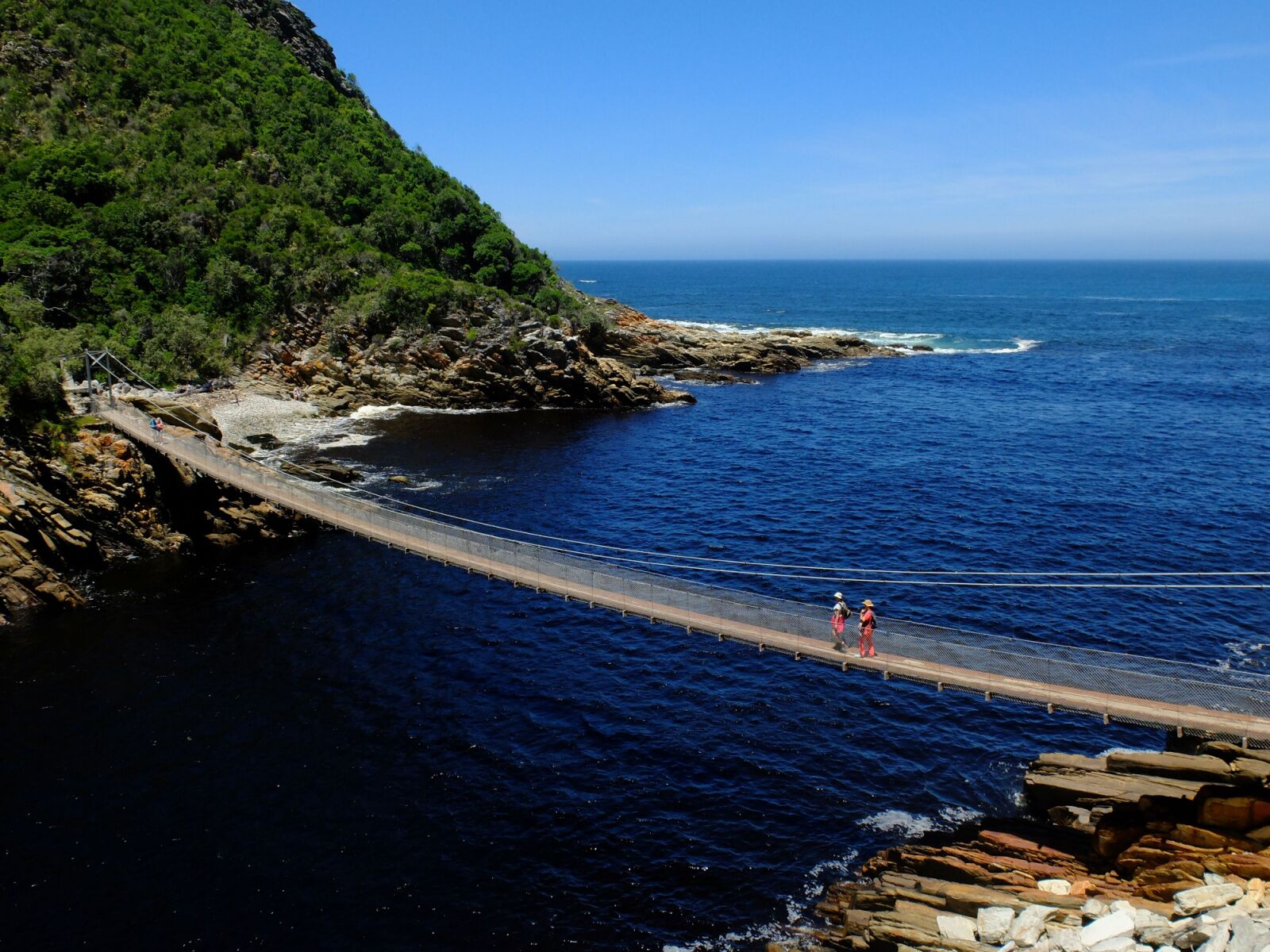
Photo: A. Mertens/Shutterstock
Garden Route National Park is a large protected area that includes three sections: the Wilderness section, the Tsitsikamma Section, and the Knysna Section. Of those, the Tsitsikamma is the most-visited, but that’s because of convenience and a few awesome suspension bridges — not because the other sections are any less amazing.
Claim to fame: Covering a large area and split between several towns, the Garden Route National Park is a must-visit for those seeking stunning coastal landscapes with lush, dense forests, dramatic cliffs, tranquil inland waters, and roaring waves.
What to do there: Every section of the park has plenty to do outdoors. Visitors can hike along rugged coastal trails, wander through massive forests on foot or on a mountain bike, or take electric scooter tours of the terrain. On water, adventures range from exploring rivers and oceans by kayaks and speedboats or going canyoneering with adventure companies like AfriCanyon.
Good to know: Unlike other South African national parks, most of the Garden Route National Park’s activities are run by private companies. But that brings a host of various unique activities, like ziplining and bungee jumping. It’s also one of the best places to try snorkeling or scuba diving, as the boundaries extend into the water.
Personal highlight: One of the things I love about the Garden Route National Park is that it’s more than just a national park; it’s a whole vibe. Being in the area is a forced connection with the great outdoors, not just a vacation. You can move as slowly as you’d like and use it as a chance to restore your soul and give yourself a mental reset, not just as a place to check off your bucket list.
My best sighting: While stand-up paddleboarding down one of the rivers in the Garden Route National Park, I was privileged to be surrounded by no less than four rare Knysna turacos. The brilliant blue, green, and red of their plumage provided a brilliant burst of color, and their calls reverberated on the cliff walls around me.
When to go: Winter (May to September) can bring cold rain and strong winds, making it hard to enjoy many of the area activities. Summer (November to February) is the best weather-wise, but also coincides with local school holidays, so it can be quite expensive and busy. That makes the shoulder season months between summer and winter the best times to plan your trip.
Where to stay: The Garden Route is awash with accommodation options. There’s riverside camping in Wilderness, unique forest tents surrounded by ancient trees in the Knysna area of the park, and nicer places like The Plettenberg Hotel and Tamodi Lodge closer to the coast.
Entry fees: Exact fees and entry requirements depend on which section of Garden Route National Park you plan to visit, ranging from r180 for adults (about $10) in the Wilderness section to r280 per adult (about $16) in the Tsitsikamma area.